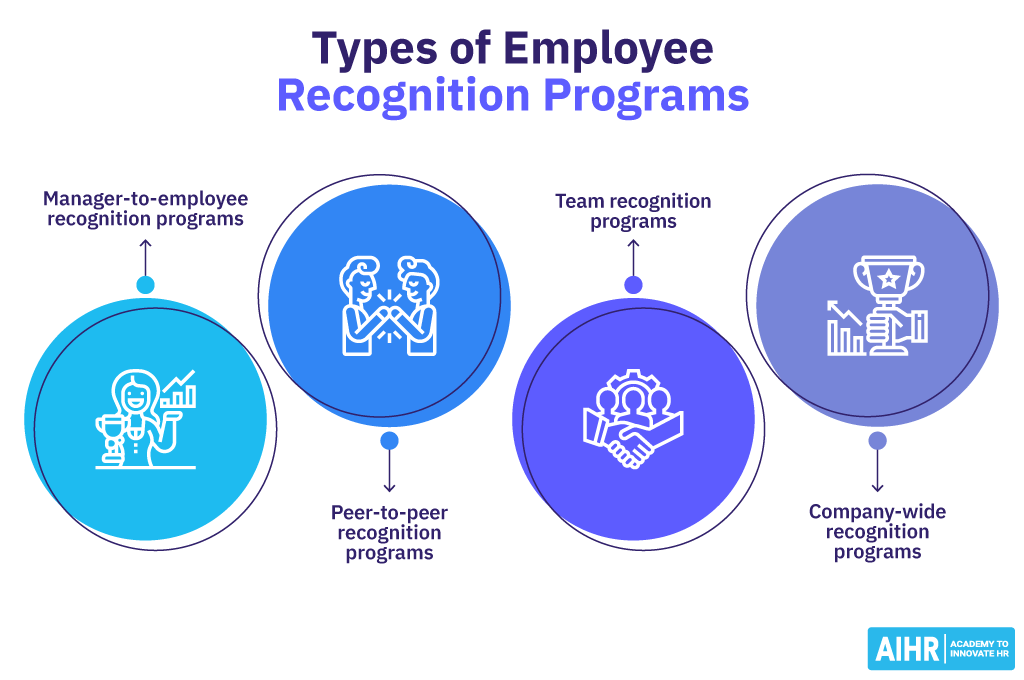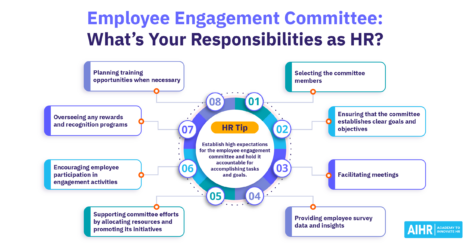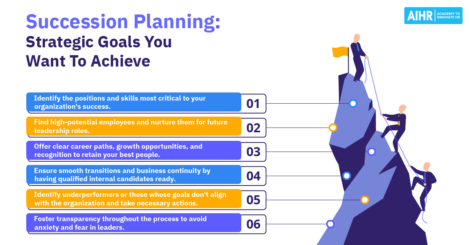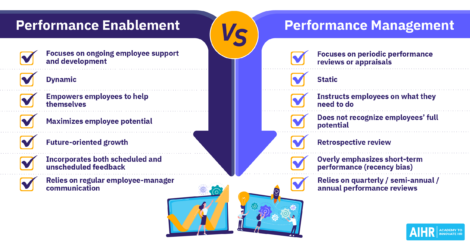How To Create an Effective Employee Recognition Program (in 2024)

An employee recognition program can help your company retain employees, improve productivity and recognize employee performance. In fact, it’s been shown that when larger businesses double their employee recognition efforts, they experience a 9% increase in productivity and a 22% decrease in absenteeism.
Even smaller companies can benefit from increasing employee engagement through a robust rewards and recognition program. But it’s important to tailor any appreciation program to your unique workplace – a one-size-fits-all approach can lead to pitfalls. We’ll explore the importance of an employee recognition program, what options exist, and how HR can create one that’s effective for your company.
Contents
What is an employee recognition program?
Types of employee recognition programs
A step-by-step guide to creating an effective employee recognition program
Successful employee recognition programs: 4 Case studies
What is an employee recognition program?
Any system where a company recognizes its employees’ achievements and positive actions can be considered an employee recognition program. These are typically shared internally and can take the form of managers recognizing team members, peers recognizing each other, or cross-team recognition.
In a survey conducted by the Society for Human Resource Management (SHRM) and Globoforce, 80% of respondents reported having some kind of employee appreciation program. You may already recognize employee performance, but it may need revamping or formalizing to increase its benefits.
Some ways your company can improve performance through employee recognition include:
- Increasing productivity: Valued employees are more satisfied and more likely to put in increased effort.
- Strengthening company culture: Programs can help support company values and mission and reinforce the company culture.
- Improving recruitment: Potential employees are more interested in working for a company that demonstrates its interest in rewarding hard work.
- Retaining existing employees: People like to stay where they feel like important contributors whose efforts are noticed.
- Encouraging participation: Engaged employees are more committed to their work and employer and want to give at a high level.
When employee recognition is created to match your company’s values and strategy, it can drive engagement and help individuals feel “seen” as important contributors to meeting business goals.
However, despite the ubiquitousness of such programs, only 40% of employees report receiving recognition more than a few times per year. To effectively boost employee morale and improve performance, a lot of thought and care must be put into creating such a program.
Types of employee recognition programs
Employee recognition programs can be as simple as acknowledging employees’ years at the company to intricate points-based rewards systems. Whichever type of program you craft, it must be something that all employees, at all levels, can incorporate into their workflow. Below is an overview of the different types of employee recognition programs you can implement:
Manager-to-employee A manager interacts with employees regularly and probably is the person most likely to see good work. Managers can be powerful sources of recognition, ranging from a quick “thank you” to financial incentives. Being selected for recognition by a manager can help employees feel more secure in their jobs and positively observed by those higher up. Peer-to-peer When recognition comes from peers, it’s more likely to cover the everyday hard work that makes a company run smoothly and helps everyone feel like their work is important and acknowledged. It also gives workers a feeling of being part of the whole when they promote peers’ work. Team-wide Teams that contribute a big win to the company, such as launching a new product or service, are likely to earn kudos, but sometimes not everyone on the team gets acknowledged. Programs that reward entire teams in new and special ways can benefit the bottom line and help boost morale. Company-wide The most effective employee recognition programs combine different ways of positively calling out workers. They might allow both managers and peers to nominate employees for recognition.
A step-by-step guide to creating an effective employee recognition program
Creating the right employee recognition program for your company takes planning and consideration. Working through these steps can help you start setting up the basics of your new or updated program.
1. Define the program objectives
What do you hope to achieve through the new program? Many HR professionals cite increasing employee engagement and positive company culture as important goals. The more specific you can make your goals, the better you can gauge success.
If you’re not familiar with setting SMART goals in HR, now is the time to learn. Defining goals for your program objectives help you focus on what’s important to achieve and get better buy-in from your management team.
2. Conduct research
Collecting feedback from employee surveys may identify the real incentives your staff wants. These surveys also provide valuable insights into employee satisfaction levels and can serve as a baseline for evaluating existing programs. With this information, you can make informed decisions on what changes or improvements need to be made to your employee recognition programs.
By taking the time to conduct research, you can ensure that your programs align with the goals and needs of your employees, resulting in a happy and productive workforce.
3. Determine the criteria for recognition
Determining who qualifies for rewards and how often they can be recognized can be challenging. This is why it’s essential to consider the eligibility criteria, such as who can participate and how long they must be with the company to earn an incentive.
Additionally, it’s important to establish how often employees can qualify for rewards, whether or not they have the ability to share their awards, and how frequently rewards will be given. Evaluating these factors can help you develop an effective employee recognition program that will motivate and inspire your workforce while contributing to your organization’s success.
4. Choose recognition methods
There are 3 main types of recognition:
- Social: Desired behaviors are rewarded with a thank you or a badge that designates employees in a top tier. Other possibilities include a “hall of fame” where information on great employee work is posted or inclusion in a special call-out during an all-staff meeting.
- Tangible: Money, experiences, or gifts are awarded to those who are recognized. Monetary incentives can be attractive to employees but not to everyone. Consider other tangible rewards that may be attractive to employees, like extra vacation days. You can consider gift cards, company “swag” (mugs, mousepads, and other items with the company logo), equipment for the workplace like a tablet or noise-canceling headphones, or a free meal such as a catered lunch or a meal delivery for the employee’s family.
- Peer-to-peer: Any type of peer acknowledgment can be incorporated into a rewards program. Peers can also participate in the reward, helping to strengthen the bond between co-workers. (Think coffee and donuts for the team when one member is recognized).
5. Create a recognition program framework
Establish a method for determining which employees deserve recognition. This can take the form of a manager-driven program, a peer-to-peer system, or a combination of both. It’s important to clearly outline the nomination process so that employees understand how they can nominate their peers for recognition and how nominees will ultimately be selected.
6. Communicate and launch
Consider whether you will have a “soft launch” to get the program up and running quickly or whether the company would benefit from a larger kick-off, such as an event. Also, think about how else you can communicate information about the program, such as through a company intranet, newsletter, or meeting. This can help educate both the managers and the employees about the ins and outs of your program.
7. Implement
Although you may have successfully communicated the initiative, training will still be key to the success of your program. Managers will need to receive training on adopting the employee recognition program within their departments or teams.
Ensure they also understand the program’s criteria and encourage managers to regularly provide timely, sincere, and specific recognition. This will help embed the program into the company culture.
8. Monitor and adapt
Evaluate how your employee recognition program is working and track the number of employees who participate. You might consider occasional surveys or focus groups to gather information on how the program works in your company’s unique environment. Metrics to track to evaluate the success of your program could include:
- Recognition frequency: Analyze how often employees are recognized. An increase in recognition frequency might indicate a positive shift in company culture.
- Types of recognition: Monitor the distribution of different types of recognition (e.g., peer-to-peer, manager-to-employee, team recognition) to ensure a balanced approach.
- Employee satisfaction: Use regular employee satisfaction surveys to gauge employees’ satisfaction with the recognition program and its impact on their work experience.
- Impact on performance: Assess whether recognized employees show improvements in job performance, productivity, and quality of work.
- Feedback quality: Assess the quality and specificity of the recognition provided. More detailed and meaningful feedback can lead to a greater impact.
9. Celebrate success stories
Don’t forget to take some time to pat yourself and HR on the back when the program is successful. Have you improved company morale? Increased retention rates? Write an article in the employee newsletter about how the program is working or talk about it during company-wide meetings.
Successful employee recognition programs: 4 Case studies
1. Cisco
Digital technology company Cisco revised a management-driven, relatively quiet reward system to recognize its 80,000 employees at all levels. In the first year, 85% of Cisco employees participated in its Connected Recognition program by giving or receiving awards. This strong recognition culture helped employees feel more engaged, and the program is still going strong after 5 years of implementation.
Key learnings:
- Frequency is important. Connected Recognition awards 600+ employees per day, with nearly 1.2 million awards handed out over 5 years. Awards valued at around $25 were especially successful (even compared to larger gifts).
- Peer-to-peer awards increase engagement. 48% of Cisco’s awards are given between team members.
2. Zappos
Shoe and apparel seller Zappos, a subsidiary of Amazon, focuses on peer-to-peer employee recognition to strengthen company culture and help people work productively together. Rewards include “money” to spend in a company store with specialized merchandise, a special parking space, or financial bonuses of $50. The company continues to achieve a turnover rate of 18% to 20% – 10% to 25% higher than the average call center.
Key learnings:
- Investing in a recognition program can pay off. Each employee can give up to $50 to a peer or manager for a job well done, encouraging participation.
- Putting thought into the program pays off. Zappos created a program where employees at each location choose rewards that matter to them and creatively devised the $50 bonus idea to involve more people.
3. Disney
Disney has utilized programs like the Disney Legacy Awards and Cast Compliments to make staff feel valued. Peer nominations drive most programs, and online tools make it easy to nominate a co-worker. Employees are designated as “Disney Legends” to acknowledge their work achievements, and their handprints are also displayed at Walt Disney Studios.
Key learnings:
- Create a buzz. High-end rewards or unique offerings get employees excited to participate.
- Use online tools. Make it easy for employees to nominate their peers with an online portal or easy-to-access form.
4. Adobe
Software maker Adobe has high levels of employee satisfaction and has been featured on lists as one of the “best companies to work for”. They eliminated employee performance reviews to create a “Check In” system where managers and employees can communicate and earn recognition for their work. They also publicize employees’ accomplishments through a blog that features stories on the impact employees make.
Key learnings:
- Communication is vital for an employee recognition program. Ensure managers and workers understand the process of nominating candidates.
- Social recognition can be important, too. Consider how you can further showcase employee impact within your organization.
Key takeaway
An employee recognition program is an essential part of recruiting and retaining employees. More importantly, it helps all workers feel more engaged, leading to greater productivity. You can reap the benefits of an employee recognition program by planning, receiving employee input, and customizing your program to your organization’s needs.
Weekly update
Stay up-to-date with the latest news, trends, and resources in HR
Learn more
Related articles
Are you ready for the future of HR?
Learn modern and relevant HR skills, online













